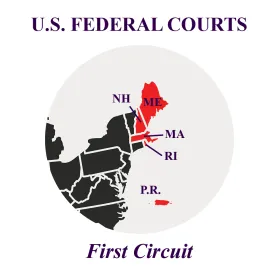On January 3, 2023, the First Circuit released an opinion that provides a straightforward analysis of the legal standards for determining if statements are non-actionable opinions, as well as the viability of materiality and scienter defenses. The U.S. Securities and Exchange Commission (the “SEC”) brought a civil enforcement action against the Defendant, and related entities, for violations of Section 10(b) of the Securities Exchange Act and SEC Rule 10b-5. The opinion is a helpful and clear reminder of the standards that courts will apply in addressing 10(b) and 10b-5 claims.
This case went to trial. According to the First Circuit opinion, the evidence showed the following background information:
-
While working as an investment adviser and fund manager, the Defendant managed all investments for a hedge fund. In this role, he published online reports and conducted interviews regarding companies in whose stock the hedge fund invested.
-
In 2014, the hedge fund began building a short position in the stock of a biotechnology company. The company’s principal product was a drug called Promacta.
-
The company had also recently entered into a licensing agreement with a biopharmaceutical drug development company called Viking Therapeutics, Inc. Viking had exclusive rights to five drug candidates and in 2014, all five drug candidates were undergoing preclinical studies or clinical trials, which were required before seeking FDA approval.
-
Viking’s S-1 contained both audited and unaudited financial data about Viking and stated that Viking “intended to rely on third parties to conduct [its] preclinical studies and clinical trials."
At issue in the case were statements that the Defendant made about Promacta and Viking. The opinion recounted the following evidence concerning the alleged misstatements:
-
In a radio interview the Defendant referenced discussions he had with the management of the company about Promacta “going away.” This was the first statement at issue and became known as the Promacta Statement.
-
Two weeks later, the Defendant claimed in a report that Viking “d[id] not intent to conduct any preclinical studies or trials” and that “the financial statements provided on the [Viking S-1] [were] unaudited.” These two statements became known as the Viking Statements.
The jury found the Defendant liable for these three statements.
The Defendant appealed. He argued on appeal that the SEC failed to introduce sufficient evidence to support the jury’s determination that the statements were (1) of fact rather than opinion, (2) material, and (3) made with scienter (the Court did not address the Defendant’s arguments based on the First Amendment). The First Circuit affirmed the District Court’s decision, holding that a reasonable jury could conclude that the Defendant made untrue statements of material fact with scienter.
The First Circuit first addressed the Defendant’s argument that the Viking Statements were inactionable opinions, rather than material misstatements of fact. The First Circuit disagreed with the Defendant noting that, “the most significant difference between statements of fact and expressions of opinion is that a statement of fact…expresses certainty about a thing, whereas a statement of opinion…does not.” The First Circuit pointed to the fact that the Defendant’s statements were not prefaced by words like “I think” or “I believe,” which can play a role in demonstrating a lack of certainty. The Defendant hoped to avoid liability by pointing the First Circuit to a series of defamation cases which stand for the proposition that opinion statements include those “when the speaker outlines the facts available to him, thus making it clear that the challenged statements represent his own interpretation of those facts and leaving the reader free to draw his own conclusions.” The First Circuit declined to apply this defamation law principle to the context of Section 10(b) and Rule 10b-5.
Next, the Defendant challenged the sufficiency of the evidence of materiality with respect to the Promacta Statement and Viking Statements. The Defendant and the representative maintained differing views about the Promacta Statement. The First Circuit held that the SEC introduced sufficient evidence demonstrating the product’s importance to the company’s bottom line and the worry the Defendant’s statement caused investors. The Court found that a jury could reasonably rely on the representative’s account of the conversation and find that investors would likely react much more adversely to news that the important product was “going away,” than they would to news that a representative said nothing when Lemelson so claimed.
On the Viking Statements, the Defendant argued that the public availability of the Viking S-1 precluded a jury from finding his statements material. His reasoning was that his false statements to the contrary of what was included in the S-1 cannot have altered the “total mix” of information available to investors. The First Circuit held that the availability of public SEC filings, as part of the “total mix of information available to investors,” did not foreclose Rule 10b-5 liability for untrue statements. Reasonable investors can interpret statements contradicting public SEC filings as significantly altering the “total mix” of information available.
Finally, the Defendant argued that even if all three of his statements were untrue statements of a material fact, a reasonable jury could not have found that he made the statements with the requisite scienter. The First Circuit held that a reasonable jury could find that the company representative’s account of the Promacta Statement was accurate and the Defendant knew this; yet, he intentionally or recklessly chose to misconstrue the conversation. There was evidence presented to the jury to show that the representative emailed the Defendant, informing him that he never made the statement that the important product was “going away” and never agreed with that statement. The First Circuit noted that “a defendant’s publication of statements when the defendant knew facts suggesting the statements were inaccurate or misleadingly incomplete is classic evidence of scienter.” Additionally, the First Circuit held that a rational jury could find that the Defendant made the Viking Statements with a “high degree of recklessness,” particularly given that he published the statements two days after the S-1 became public. Importantly, the First Circuit suggested that a reasonable jury could infer that the Defendant investigated thoroughly before making misrepresentations, given the importance of the Defendant’s short position in the company.
This case provides a helpful roadmap because it sets out clearly the standards for evidence required to establish violations of Section 10(b) and SEC Rule 10b-5.





 />i
/>i
